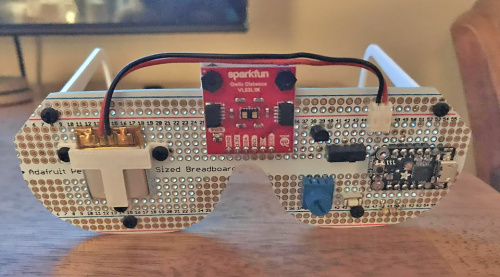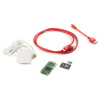When one of Thomas Sullivan's friends lost sight in one eye, Sullivan decided to design a device to help with peripheral vision. The feedback he received was so overwhelmingly positive, he decided to design a pair of glasses that combined distance sensing and haptic feedback to allow the wearer to form a mental image of the three-dimensional space in front of them.
While Sullivan continues to share his design with friends and family, he ultimately hopes that someone will take the design even further to allow for more widespread testing and access.
Project Submissions:
If you have a project that you want to show off and are interested in writing a post for SparkFun, tweet us @SparkFun, tag us on Instagram @SparkFun, or shoot us an email, but the best way is to submit your project by clicking the link below. We'd love to work with you and share your project!









Three comments (hopefully "constructive") for Mr. Sullivan:
Since the sensor has Qwiic connectors by default, I would have been inclined to do the electrical connections by taking a Qwiic cable, and clipping it in two, stripping the ends of the wires, and soldering them to holes close to the Trinket. This would greatly simplify experimenting with other (hopefully Qwiic enabled) sensors, rather than having to unsolder/resolder them.
A second thought is that rather than 3-D printing the "frames", get a pair of "reading glasses" (they're cheap -- Walmart, Target, Costco, etc. for sources) and remove the lenses. You'd have to do some "tinkering" to connect the breadboard, but they'd have the advantages of having hiinges built in as well as having (relatively) comfortable nose pieces. Also, the side pieces, being metal, could be bent if necessary, to provide a better fit.
The third thought is that with the slightly-lamented demise of Radio Shack, nibblers can be hard to find. FWIW, I've gotten them from Digi-Key.